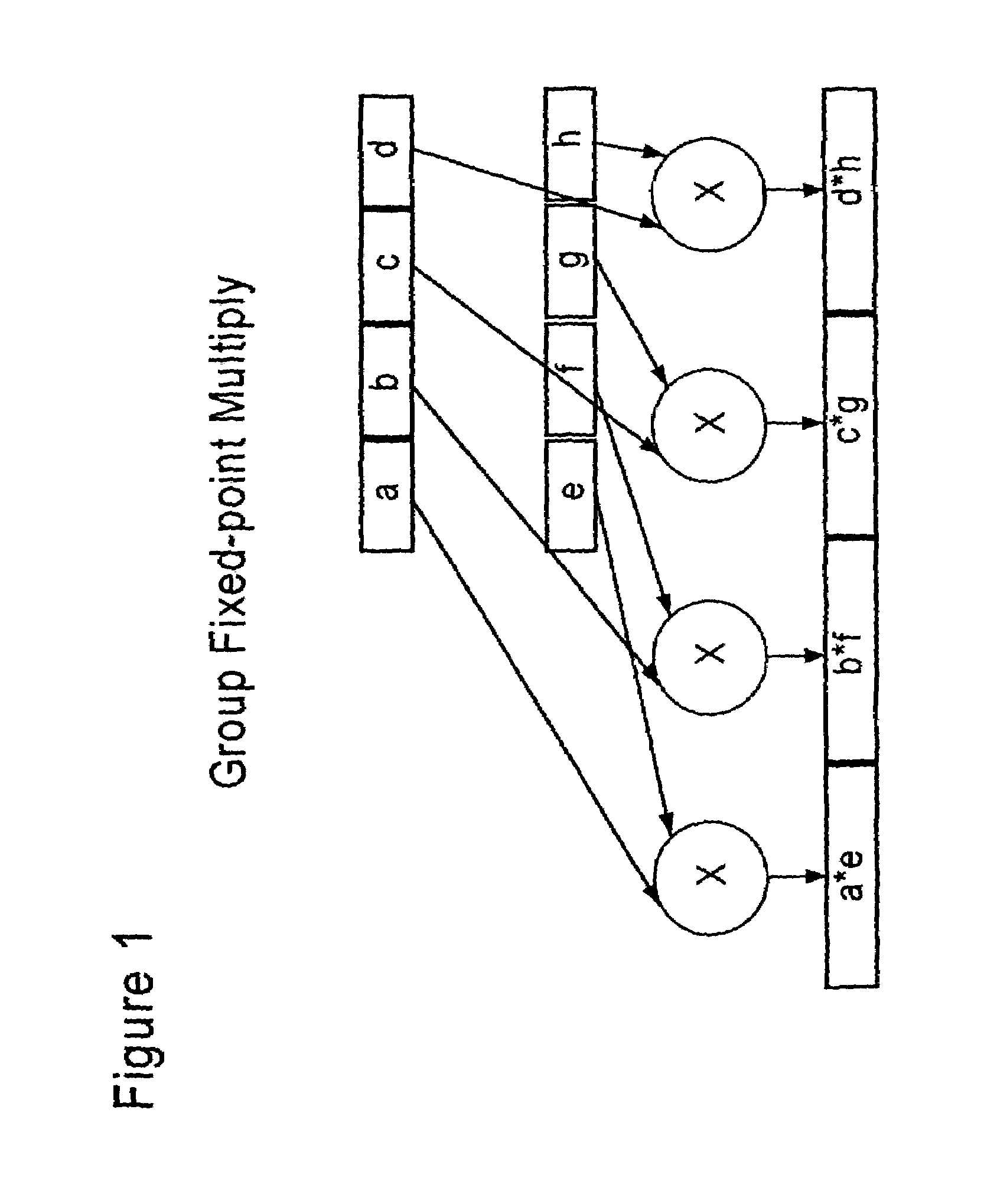Multiplier array processing system with enhanced utilization at lower precision
a processing system and multiplier array technology, applied in the direction of computation using denominational number representation, memory adressing/allocation/relocation, instruments, etc., can solve the problem of not appreciably changing the relation between the size of the operand, affecting the utilization rate of the multiplier and the adder array resources, and consuming greater circuit resources for high-precision operations. , to achieve the effect of improving the utilization rate of the multiplier and reducing the utilization rate of the adder array
- Summary
- Abstract
- Description
- Claims
- Application Information
AI Technical Summary
Benefits of technology
Problems solved by technology
Method used
Image
Examples
Embodiment Construction
[0031]A multiplier array processing system is described wherein numerous specific details are set forth, such as word size, data path size, and instruction formats etc., in order to provide a thorough understanding of the present invention. It will be obvious, however, to one skilled in the art that these specific details need not be employed to practice the present invention. In other instances, well known processor control path and data path structures have not been described in detail in order to avoid unnecessarily obscuring the present invention.
[0032]FIGS. 1-4 illustrate instructions from the instruction set forth in the parent application Ser. No. 08 / 516,036 filed Aug. 16, 1995.
[0033]FIGS. 1 and 2 relate to fixed-point multiplication instructions, wherein groups of symbols of 64-bit total size are multiplied together, thereby producing groups of products of 128-bit total size. The individual symbols are of sizes from 1 bit to 64 bits, i.e., 64×1-bit, 32×2-bit, 16×4-bit, 8×8-b...
PUM
 Login to View More
Login to View More Abstract
Description
Claims
Application Information
 Login to View More
Login to View More - R&D
- Intellectual Property
- Life Sciences
- Materials
- Tech Scout
- Unparalleled Data Quality
- Higher Quality Content
- 60% Fewer Hallucinations
Browse by: Latest US Patents, China's latest patents, Technical Efficacy Thesaurus, Application Domain, Technology Topic, Popular Technical Reports.
© 2025 PatSnap. All rights reserved.Legal|Privacy policy|Modern Slavery Act Transparency Statement|Sitemap|About US| Contact US: help@patsnap.com



